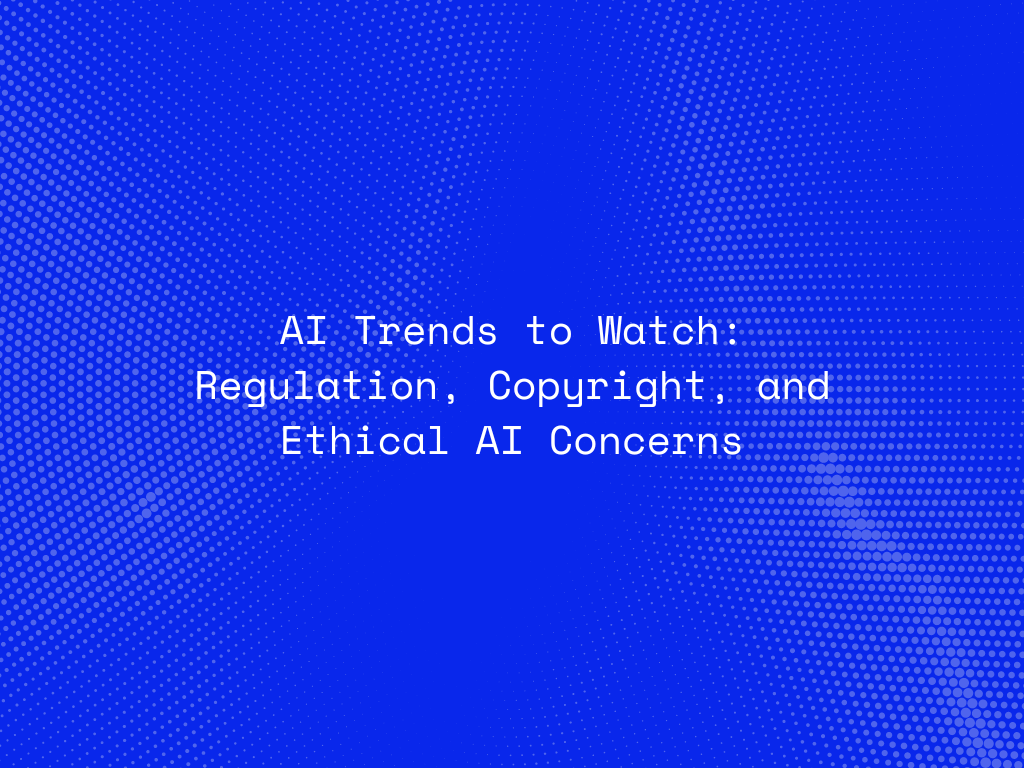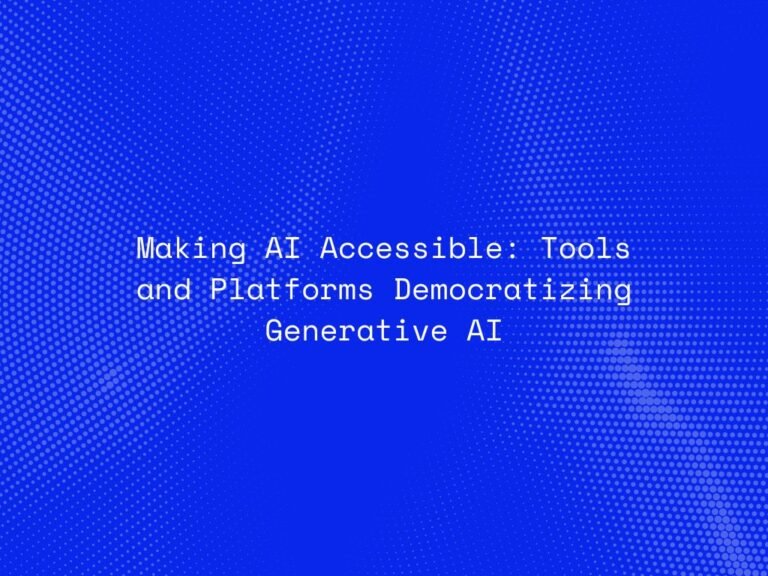As artificial intelligence (AI) continues to advance at an unprecedented rate, its influence is being felt across industries, from healthcare and finance to entertainment and research. However, alongside its rapid adoption comes a host of legal, ethical, and regulatory challenges that are becoming increasingly urgent. Issues surrounding AI regulation, copyright, and ethical concerns are at the forefront of discussions as we grapple with how to responsibly integrate AI into our society.
This blog explores the key trends to watch in the evolving landscape of AI, focusing on how governments, industries, and thought leaders are addressing these critical concerns.
1. AI Regulation: A Global Priority
With the proliferation of AI technologies, calls for comprehensive regulation have grown louder. The primary focus of these regulations is to ensure that AI systems are safe, transparent, and accountable. However, creating effective regulation is a delicate balancing act—one that must support innovation while protecting individuals and society from the risks AI poses.
Key Trends in AI Regulation:
EU’s AI Act: The European Union has been leading the charge with its AI Act, the first attempt to create a legal framework governing AI use. The Act proposes classifying AI applications based on their risk level, with higher-risk systems, such as those used in healthcare or law enforcement, facing stricter regulations. This tiered approach could become a model for other countries looking to regulate AI.
US AI Bill of Rights: In the United States, discussions around AI regulation have led to the introduction of a proposed AI Bill of Rights, which aims to protect citizens from harmful AI outcomes. The principles include protections against biased AI systems, ensuring that individuals are not unfairly discriminated against by automated decision-making processes in areas like hiring, lending, and law enforcement.
China’s AI Oversight: China has also been proactive in its regulation of AI, focusing particularly on data privacy and algorithmic transparency. The country recently introduced a law that mandates companies to disclose key details about their AI algorithms, especially if they are used to influence consumer behavior or public opinion.
International Collaboration: The global nature of AI development has prompted calls for international cooperation. Organizations like the United Nations and OECD are working to develop international guidelines that address the ethical and legal implications of AI on a global scale, ensuring consistency across borders.
2. Copyright in the Age of AI: Who Owns AI-Generated Content?
As generative AI models, such as GPT-4, DALL-E, and MidJourney, produce increasingly sophisticated text, images, music, and designs, questions of ownership and copyright have come to the forefront. The ability of AI to create original content raises complex issues around who, if anyone, holds the rights to AI-generated works.
Key Copyright Issues with AI:
Authorship and Ownership: One of the central debates in AI copyright revolves around authorship. If an AI model generates a novel work, can it be copyrighted? Current copyright law does not recognize AI as an author, meaning that human intervention—such as providing the initial input or prompts—might be required to claim ownership. This leaves open questions about what constitutes “sufficient” human contribution.
Training Data and Fair Use: Generative AI models are trained on vast amounts of data, often scraped from the internet without explicit permission from content creators. This has sparked legal battles over whether using copyrighted content for training AI models constitutes fair use. In 2023, several high-profile lawsuits were filed against AI companies by artists and writers who claim their work was used without compensation or consent.
AI-Generated Art and Music: AI-generated art and music have captured the public’s imagination, but they also raise important questions about creativity and originality. As AI models continue to evolve, there is an ongoing debate about whether AI-generated creations can be considered true “art” and how intellectual property laws should apply to them. In the meantime, some artists have begun to embrace AI as a collaborative tool, while others remain wary of its potential to disrupt traditional creative industries.
Legislative Responses: Governments are beginning to address these concerns. The US Copyright Office has ruled that only works created with “human authorship” can be copyrighted, while the UK has taken steps to clarify the legal status of AI-generated content by allowing for copyright protection in some cases, but only when a human is deemed to be the creator.
3. Ethical AI: Navigating Bias, Privacy, and Accountability
Ethical AI concerns have become a major focus as AI systems are increasingly used in decision-making processes that affect people’s lives. From employment decisions and loan approvals to criminal sentencing, AI has the potential to perpetuate and even amplify existing biases if not properly managed. Moreover, concerns about data privacy, accountability, and the lack of transparency in AI systems continue to fuel ethical debates.
Major Ethical AI Concerns:
Bias and Fairness: AI models trained on biased data can produce discriminatory outcomes, disproportionately affecting marginalized communities. For instance, AI used in hiring or policing has been found to reinforce existing racial or gender biases. This raises important questions about how to ensure that AI systems are fair and do not perpetuate inequality.
- Example: In 2018, a recruitment tool developed by Amazon was found to favor male candidates over females, highlighting how biased training data can result in biased AI outcomes.
Algorithmic Transparency: Many AI systems, particularly those based on deep learning, operate as black boxes, making it difficult to understand how they arrive at their decisions. This lack of transparency is especially problematic in high-stakes areas such as healthcare or criminal justice, where it is critical to explain and justify decisions.
Accountability: As AI systems become more autonomous, the question of who is responsible when things go wrong becomes more pressing. Should the blame lie with the developer, the company deploying the AI, or the AI system itself? This issue is further complicated by the use of AI in autonomous systems, such as self-driving cars, where errors could have fatal consequences.
Data Privacy: AI systems rely on vast amounts of data to function, often collecting sensitive personal information. As AI becomes more integrated into our daily lives, concerns about data privacy and the potential for abuse—whether through surveillance, data breaches, or unauthorized data sharing—are intensifying.
Industry Responses to Ethical AI:
AI Ethics Committees: Many companies, including Google, Microsoft, and IBM, have established AI ethics committees to oversee the responsible development of AI technologies. These committees are tasked with ensuring that AI systems are developed in line with ethical principles, such as fairness, transparency, and privacy.
Ethical AI Guidelines: International organizations, such as the European Commission and OECD, have published ethical guidelines for AI development, which emphasize the need for fairness, transparency, and accountability. These guidelines are helping shape the conversation about what constitutes responsible AI use.
4. The Future of AI Governance
As AI continues to evolve, the need for robust governance frameworks will only grow. The challenges surrounding AI regulation, copyright, and ethics will require governments, businesses, and civil society to work together to create systems that encourage innovation while protecting the public from potential harm.
AI Impact Assessments: One potential solution is the implementation of AI impact assessments, which could function similarly to environmental impact assessments, requiring organizations to evaluate the potential risks and benefits of deploying AI systems before they are put into use.
Collaborative Governance: AI governance may benefit from multi-stakeholder collaboration, involving governments, tech companies, academia, and civil society. This approach would ensure that a broad range of perspectives are considered when developing regulations and ethical guidelines for AI.
Ongoing Research: As the capabilities and potential risks of AI become clearer, ongoing research into the societal impacts of AI will be essential. This research should inform both regulatory frameworks and the design of AI systems to ensure they align with societal values.
Conclusion
The rapid advancement of AI presents both unprecedented opportunities and significant challenges. The issues of regulation, copyright, and ethical concerns will play a pivotal role in shaping the future of AI. As we navigate this complex landscape, it will be essential to strike a balance between fostering innovation and ensuring that AI technologies are developed and used in ways that are safe, fair, and transparent.
Governments, businesses, and researchers must work together to create governance frameworks that address these challenges, protect individual rights, and promote the responsible development of AI. The future of AI will depend on how well we can navigate these emerging trends.




